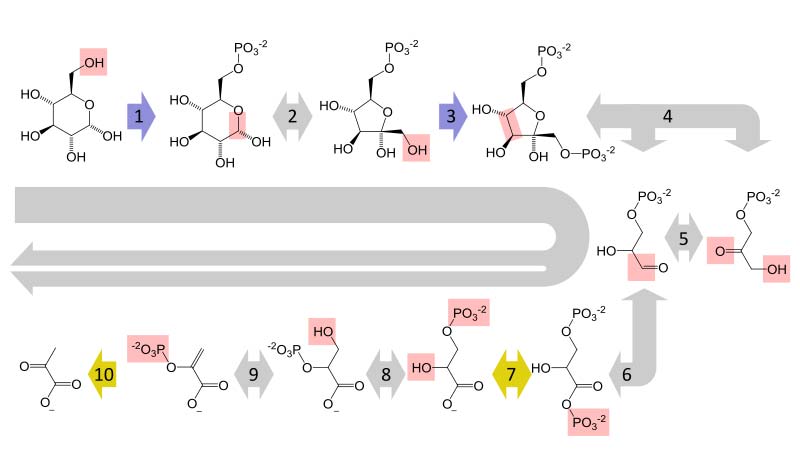glycolysis

The metabolic pathway of glycolysis converts glucose to pyruvate by via a series of intermediate metabolites. Each chemical modification is performed by a different enzyme. Steps 1 and 3 consume ATP and steps 7 and 10 produce ATP. Since steps 6–10 occur twice per glucose molecule, this leads to a net production of ATP.
Glycolysis, also called anaerobic metabolism, is a metabolic process that transforms glucose into pyruvic acid or lactic acid in the muscles (or other tissues), for energy production, in the form of ATP (adenosine triphosphate). It takes place when insufficient oxygen is available in an emergency situation to support the more normal citric acid cycle (Kreb's cycle). Glycolysis occurs in the cytoplasm outside the mitochondria.
During glycolysis, glucose is broken down into a molecule called pyruvate. Each reaction is designed to produce some hydrogen ions that can then be used to make chemical energy packets in the form of ATP molecules. However, only four ATP molecules can be made from one molecule of glucose in this pathway – much fewer than are produced by the citric acid cycle. In prokaryotes, glycolysis is the only method used for converting energy.


